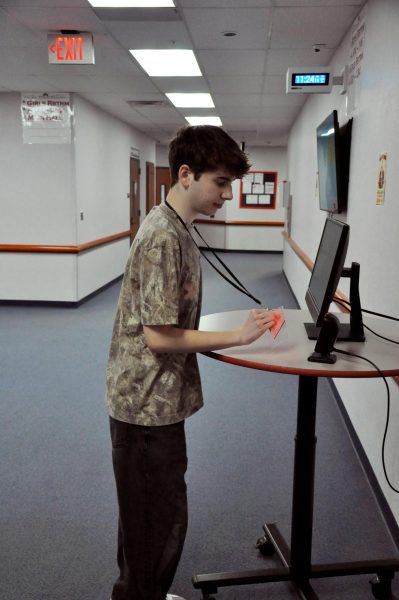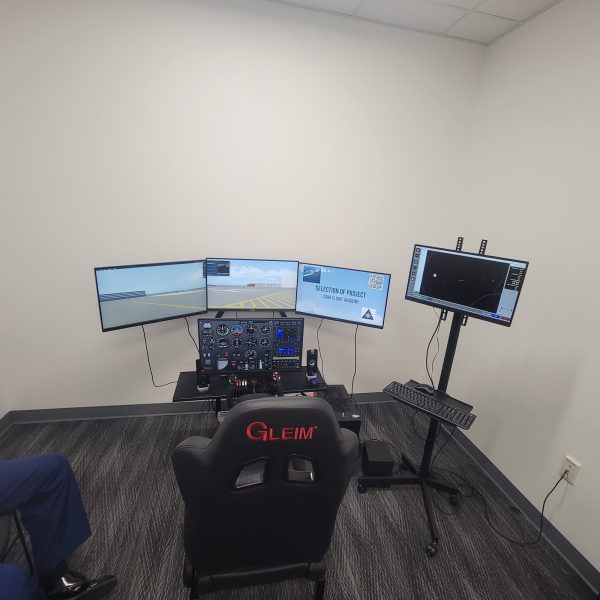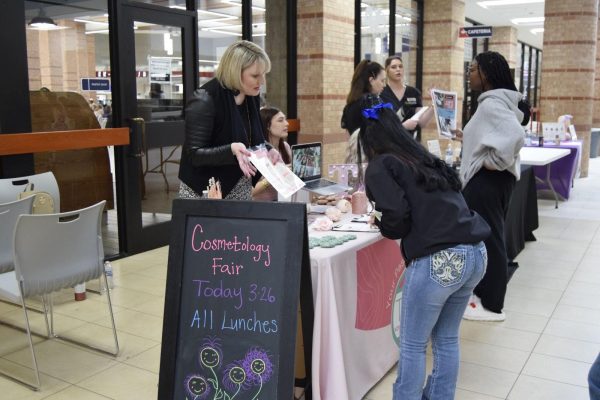The Broken Image
The dangers of eating disorders and the journey to recovery
It’s lunchtime.
For most, lunch is a time to socialize and nourish, a brief refuge from the demands of school. For you, the lunchroom is a trigger. The chaos of hundreds of students swirls around you, none of them to call a friend.
You retreat into the bathroom stall and eat your lunch alone. You can’t see them, but the bathroom is swarming with girls pampering themselves in the mirror. Waiting for the chance to be alone, you eat your sandwich in silence, scrolling through the “pro-mia” blog you recently followed on Tumblr.
After the final footfall clicks on the tile floor, you turn to face the toilet and fill the cavernous silence of the bathroom with echoes of retching.
Ninety-five percent of individuals with an eating disorder are between the ages of 12 and 26 according to the National Association of Anorexia Nervosa and Associated Disorders. Even at Allen High School, this is a reality.
Along with depression and anxiety, senior Kayla Padol suffered from bulimia nervosa, a disorder defined by excessive eating followed by purging, during her freshman and sophomore year.
“It doesn’t mean that I’m messed up or there’s something wrong with me,” Padol said. “Everyone has something they can improve on and [my disorders] are so stigmatized that some people put me in a box which is really hard to deal with.”
Since she was a child, Padol had a habit of overeating. When her grandmother caught her in the closet sneaking food during her fourth grade year, her habits spiraled into an eating disorder.
“That’s where I pinpointed it all started and ever since then I would sneak food, and then I would just overeat, and then it got to the point around sixth grade that I would start trying to throw up,” Padol said.
Junior Sheridan Hines was hospitalized when she was 14 after struggling with anorexia nervosa since she was 9. Anorexia nervosa, as characterized by the American Psychological Association, is a refusal to eat, compulsive exercise and excessive weight loss.
Hines didn’t realize the extent of her issues with food until people would make comments about her weight loss; at one point, she was 80 pounds. After prolonged periods of staying in bed all day out of weakness, her mother took her to the hospital.
“A lot of people think that it’s just ‘oh they want to be skinny I just want to be like everybody else’ but I think it’s more of a mental thing,” Hines said. “It’s not just like ‘I just want to be skinny;’ it’s a fact of you hate yourself so much that you just want to die, and you’re going to do it the hardest way possible: by starving yourself.”
Hines stayed at Allen Presbyterian Hospital for three months where she took part in group, individual and nutritional therapy. But when she was first in the hospital, Hines often refused to eat, caught up in the idea that the weight loss from her anorexia made her look better.
“You hate yourself so much, but you do it anyway because it makes you feel better,” Hines said.
Padol was already visiting a therapist to manage her anxiety, and when she first mentioned purging, the therapist “treated it like a normal phase” that all teen girls go through at some point or another. She also discussed her bulimia at church camp where the counselors were sympathetic but passive, according to Padol.
Once Padol found a new therapist, she “started to work things out.”
“I started praying a lot and I went through this Bible study and that’s what centered me and brought me back to reality,” Padol said. “Really none of this matters and it’s all earthly things and I’m really just a soul, and it’s hard to know that.”
Padol has since spoken at Tallenette Camp as well as over Twitter about her experience with bulimia, which has allowed her to help others with their own pain. She is now known for promoting positivity among her peers in Tallenettes. All of these things have helped Padol love herself.
“I love others so much, and so it’s good to redirect that love back on myself for the things I am good at, and those things mean so much more than the amount of body fat on my body,” Padol said.
As time continued after Hines’ stay in the hospital, she similarly began to feel more self-love.
“It’s weird because now I want to gain weight instead of lose weight,” Hines said. “I get proud when I’m like, ‘I have cellulite! That’s really cool. I’ve never had that before,’ but me six years ago would have been terrified of it.”
Although Hines has been out of the hospital for three years, she has relapsed twice since then and has regular doctor visits to track her mental health and diet.
“It’s not something that like ‘bang, boom, you’re fine,’” Hines said. “There are still days now where I only eat one meal a day because I don’t want to eat. If I get upset I’ll go back into it.”
Not only do eating disorders damage self-image, but they have physical repercussions as well. According to the American Psychological Association, individuals with anorexia have a mortality rate 18 times higher than those without eating disorders.
Additionally, Hines didn’t have her menstrual cycle for four years, which limited the amount of calcium to her bones and caused them to age, and Padol lost her gag reflex after excessive purging.
“I think that was the most eye opening thing for me was realizing that I was messing my entire body up, and now I have to live with that,” Hines said.
Hines chose not to talk to people about her struggle with anorexia until about a year ago because of the judgment she was afraid to receive. She said she now recognizes that talking helps and that it is a mental disorder she is still overcoming.
“Now I feel like it’s a coping mechanism to talk about it,” Hines said. “I consider [anorexia] more of a mental disorder because it’s something you stick with for the rest of your life.”
As a result of her experiences, Padol has become impassioned with destigmatizing eating disorders and other mental disorders. She said that those struggling with eating disorders “need reinforcement” and should know that “it’s reversible.”
“When you’re in that state of mind you need attention because you need help, and you need someone to pull you out of that pit of despair you’ve been in,” Padol said. “People just need to be kinder and aware and [not] joke about it.”

Sara Schleede is a senior who enjoys podcasts, sweater tights and visiting museums. She plans to study print and digital journalism in college and then...







